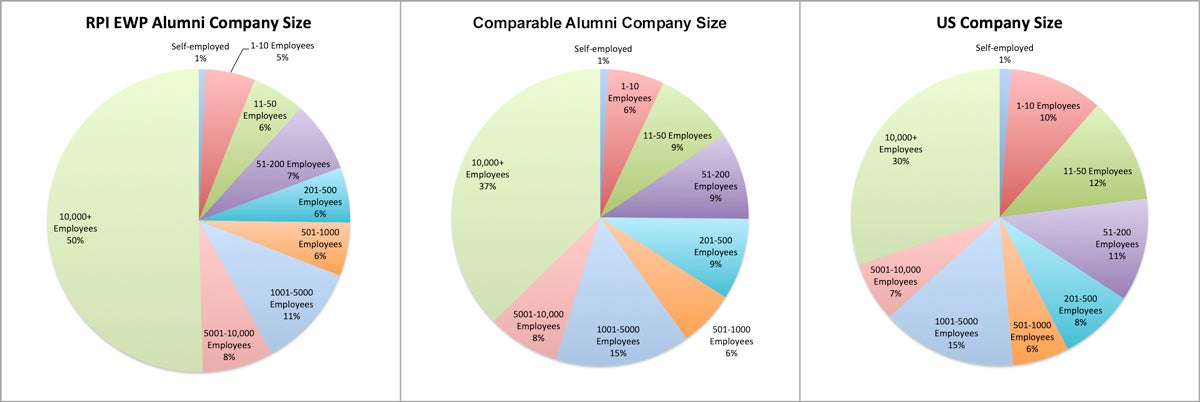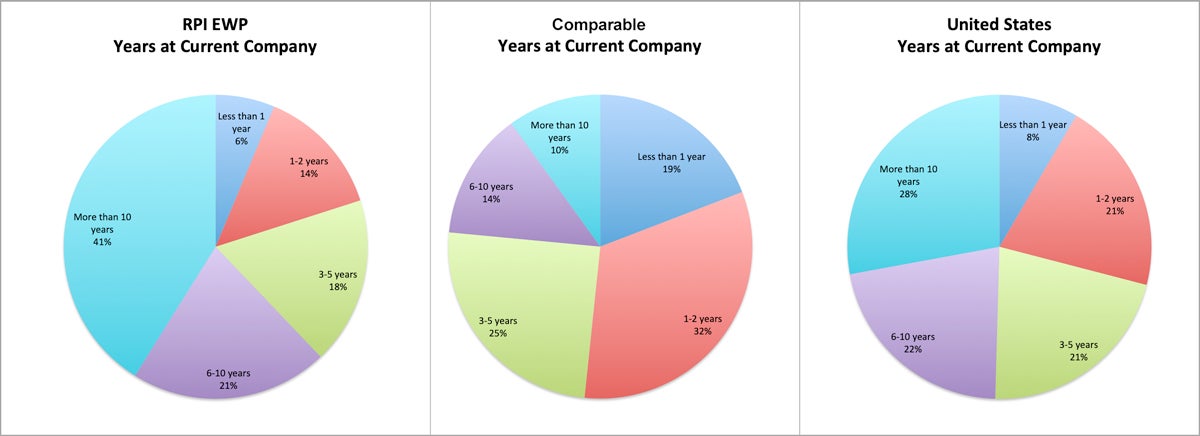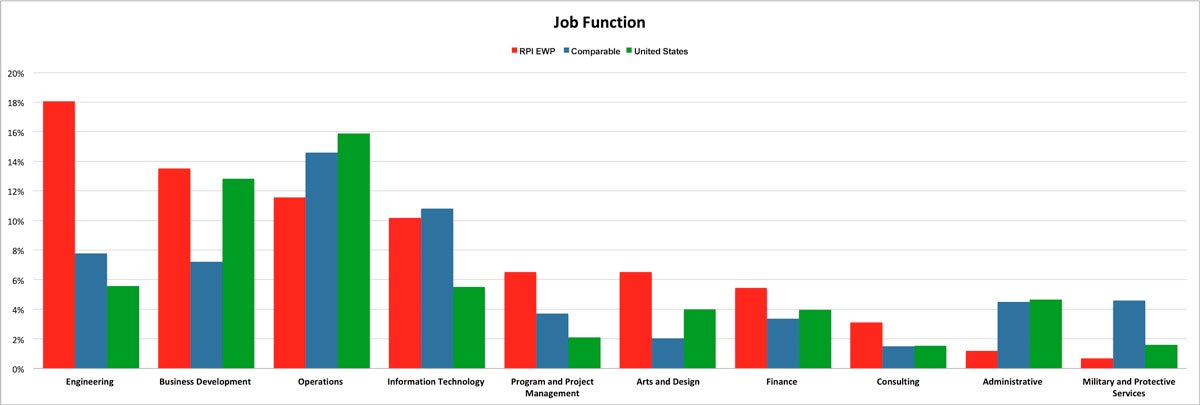
Every university likes to say that it is unique. And then there is Rensselaer at Work. We prefer to show that we are different and, true-to-form, we do it with data.
Rather than poll our alumni with surveys they don’t have time to answer—they’re working professionals with fulfilling personal lives, after all—we decided to document what they say about themselves on LinkedIn and the results are both eye-opening and completely unsurprising.
Eye-opening because, compared to other schools, our alumni form what is likely the most distinctive group imaginable. Unsurprising because our mission has always been to educate the rising stars of the top corporations and our alumni reflect that.
Note: we decided to benchmark ourselves against another well-regarded university in the Northeast from which we could find data about their alumni on LinkedIn. We also included US averages as self-reported on LinkedIn to further highlight the differences and similarities between Rensselaer at Work graduates and the general population.
Our alumni work for big companies.
In an era when so many Americans work for small companies, half of our alumni work for companies with 10,000+ employees and another 25% work for companies with 500-10,000 employees.
By contrast, at the comparable school, just over one-third work for companies with 10,000+ employees. 25% of their alumni work at companies with 200 or fewer employees. This is much closer to the US average where nearly 50% work for companies with 1,000 or fewer employees.

Our alumni hold senior positions in big companies.
The data collected from LinkedIn shows 16% of our alumni are in entry-level jobs, while 18% are in VP, CXO, Partner or Owner positions. Over 3/5 (62%) are in Senior, Manager or Director positions - which overlaid against the size of the companies they work for- means that they have significant responsibilities, budget authority, and leadership roles.
Interestingly, while the same percentage of both schools are in Senior positions, the comparable school’s alumni are more than twice as likely to be in Entry positions. Compared to the US population, both RPI and the comparable school have more Senior positions, but they and the US have similar percentages of Entry positions.

Our alumni are stable at work.
One of the key indicators of workplace happiness and fulfillment is job stability. Rensselaer at Work alumni clearly love their jobs because they stick with them, year in and year out. 62% have been in their current position for 6 or more years and only 20% have changed jobs in the last two years. Given that major corporate initiatives take years of planning and execution, it’s completely in keeping with our motto of “Why not change the world?”.
In keeping with their Seniority (overwhelmingly Entry level or Senior), most of the comparable school’s students have been with their employers for fewer than two years. Only 24% have been with the same employer for 6 or more years. Interestingly, the US population appears closer to Rensselaer with 50% of employees at the same company for 6+ years.

Our alumni work in Public and Private companies.
Not surprisingly, given how many Rensselaer at Work alumni work at large companies, over half work at Public Companies. Another 25% work at Privately-Held Companies. The flipside of these statistics is how strikingly few work for Government Agencies, Educational Institutions, and Non-Profits.
The comparable school, on the other hand, is largely represented at Government Agencies, Educational Institutions, and Non-Profits. Over one-third of their alumni work in those fields. Public and Private Companies still make up two-thirds of the employers, but clearly must compete with a wider variety of prospective employers.
The US population closely mirrors the comparable school’s population, with a few more in Privately-Held and a few less in Government Agencies.

Our alumni are over-represented in several key job functions.
As an institution that has traditionally been associated with engineering, it’s no surprise that Rensselaer at Work graduates are over-represented in several key areas including Engineering, Business Development, Program and Project Management, Finance and Consulting. Our high ranking in Arts and Design is an unexpected surprise. Given that we don’t offer courses in Healthcare, Military and Protective Services, or Administration, it’s no surprise that we show so few graduates in those fields.
The comparable school is far more balanced in its distribution of job functions and exceeds RPI in all of the social fields, especially Education, Human Resources, Community & Social, and Support. They also exceed RPI in Operations but lag slightly in Sales. The two schools are nearly tied in Research and IT.

Why this even matters.
Choosing a graduate program qualifies as a major life decision so it makes sense to weigh as many factors as possible. Because you’ll be spending the next few years with your classmates and because you’ll be part of the same network for decades to follow, you should consider if they’re a good fit for you and vice versa.
It’s also a significant outlay for companies that invest in their key employees’ education. They have both immediate and future needs, both known and unknown, in an increasingly complex, global, and competitive world.
Schools tailor their programs and hire professors to fit their students’ needs. They’re also heavily influenced by their alumni and the companies that hire their alumni. So, while every school has its strengths and weaknesses, you maximize the value of your degree by proactively choosing your best fit.